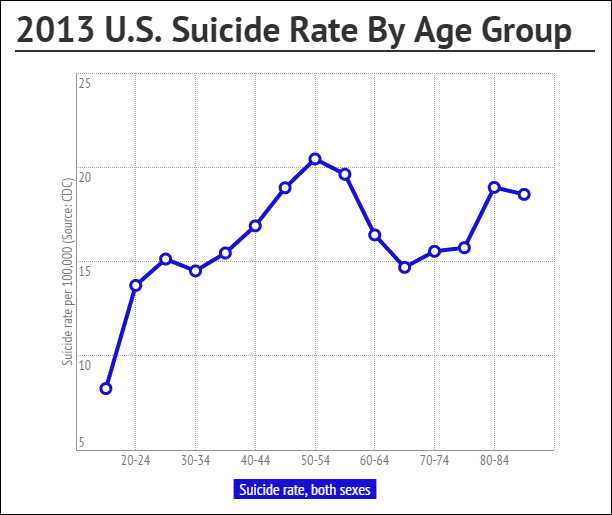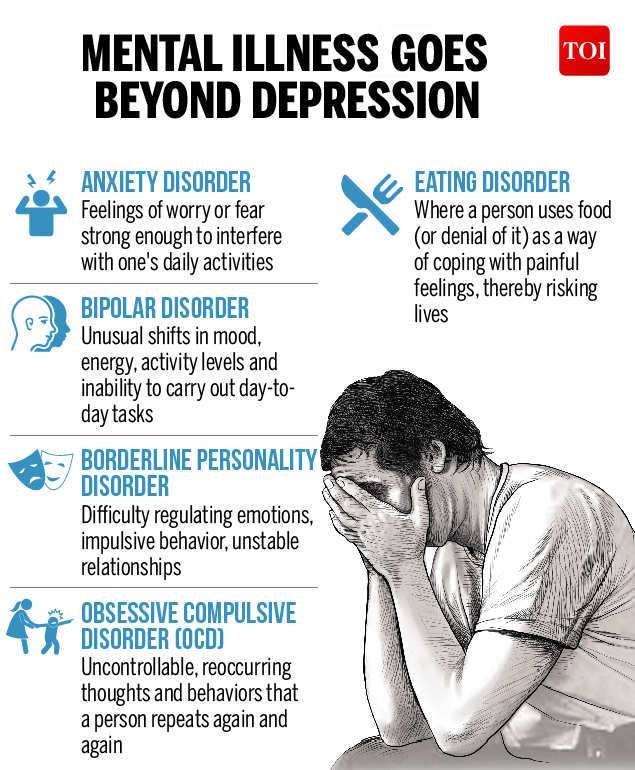What Countries Have The Highest Depression Rates
The World Health Organization tracks depression rates from around the world. However, its essential to keep in mind that depression and other mental health conditions are vastly underreported around the globe. Cultural biases, social stigma, and a lack of access to screening and treatment can all influence rates of underreporting. The most recent findings on global depression rates from the WHO indicate that the following countries have the highest rates of depression:
In the U.S., one in five adults will struggle with a depressive disorder at some point in their lifetimes. However, only 41% of depression sufferers will receive help for their illness. The biggest reason that mental health advocates cite as the prevention for people getting help for their depression in the U.S. is a lack of sufficient healthcare providers and the prohibitive costs of medication.
Surprising Facts About Major Depressive Disorder
Major depressive disorder also known as depression or major depression is often misunderstood as just feeling sad. But its a complex medical condition thought to be caused by a combination of factors, including genetic, biological, psychological, and environmental triggers, according to the National Institute of Mental Health .
While its not yet clear exactly what causes depression, researchers have made great progress in learning more about how to manage and treat this common mental health disorder. Here are some facts about depression, depression symptoms, and depression management that might surprise you.
Depression Rates Around The World
Depression affects about 1 in 15 adults in any given year, and 1 in 6 people will experience depression at some time in their life. An Our World In Data study estimates about 3.4% of the global population has depression. This is about 264 million people worldwide. According to WHO estimates, the ten countries with the highest prevalence of depression are:
You May Like: Anti Depression Pills For Sleep
Prevalence Of Mental Health And Substance Use Disorders
The predominant focus of this entry is the prevalence and impacts of mental health disorders . However, it is useful as introduction to understand the total prevalence and disease burden which results from the broad IHME and WHO category of mental health and substance use disorders. This category comprises a range of disorders including depression, anxiety, bipolar, eating disorders, schizophrenia, intellectual developmental disability, and alcohol and drug use disorders.
Mental and substance use disorders are common globally
In the map we see that globally, mental and substance use disorders are very common: around 1-in-7 people have one or more mental or substance use disorders.
Prevalence of mental health disorders by disorder type
Its estimated that 970 million people worldwide had a mental or substance use disorder in 2017. The largest number of people had an anxiety disorder, estimated at around 4 percent of the population.
Prevalence of mental health disorders by genders
Depression Rates By Country 2023

6.50%
Depression, also known as major depressive disorder, is a mental health disorder that negatively affects how a person feels, thinks, and acts. The Global Health Data Exchange estimates that 251-310 million people worldwide suffer from depression. While depression is common, it is also, fortunately, treatable.
Don’t Miss: Depression Not Getting Better With Medication
Women And Youth Most Affected
Indicating that females were more affected than males – and that younger people, especially those aged between 20 and 24, were more affected than older adults – the report also reveals that young people are disproportionally at risk of suicidal and self-harming behaviour.
It also outlines that people with pre-existing physical health conditions, such as asthma, cancer, and heart disease, were more likely to develop symptoms of mental disorders.
Data Availability On Mental Health
The majority of data presented in this entry is based on estimates from the IHMEs Global Burden of Disease . This is currently one of the only sources which produces global level estimates across most countries on the prevalence and disease burden of mental health and substance use disorders.
Nonetheless, the GBD acknowledges the clear data gaps which exist on mental health prevalence across the world. Despite being the 5th largest disease burden at a global level , detailed data is often lacking. This is particularly true of lower-income countries. The Global Burden of Disease note that the range of epidemiological studies they draw upon for global and national estimates are unequally distributed across disorders, age groups, countries and epidemiological parameters.46 Using these studies to provide full coverage of these disorders is challenging.
To overcome these methodological challenges the authors note:
Don’t Miss: Things To Never Say To Someone With Anxiety And Depression
Putting Two Things Together
There is good reason to believe that the world is getting more depressed. T.M. Luhrmann, Professor of Anthropology at Stamford travels a lot, frequently to the third world, so she has a chance to sample what people say and note how that changes over time. But she also cites data such as the World Health Organizations report that suicide rates have increased 60 percent over the past 50 years, most strikingly in the developing world.
Writing in The New York Times, she notes the report predicts: by 2020 depression will be the second most prevalent medical condition in the world. She adds: The British medical journal, The Lancet, found a 36.7 percent increase in the burden of mental illness and substance abuse disorders across the globe. And then: In 2011, the Centers for Disease Control and Prevention reported that the rate of antidepressant use in the United States rose by 400 percent between 1988 and 2008.
None of this is proof of the trend, but it is highly suggestive and worrisome.
How does she account for it?
But it takes more than a comparison to make one depressed. A more plausible explanation is the comparisons with others when you feel stuck and helpless yourself. If we put together the impact of social media and the world-wide phenomena of growing income inequality, we may have the answer.
Statistical Methods And Measurement Caveats
Diagnostic Assessment:
Population:
- The entirety of NSDUH respondents for the major depressive episode estimates is the civilian, non-institutionalized population aged 12-17 and 18 years old or older residing within the United States.
- The survey covers residents of households and persons in non-institutional group quarters .
- The survey does not cover persons who, for the entire year, had no fixed address were on active military duty or who resided in institutional group quarters .
- Some adults and adolescents in these excluded categories may have had a major depressive episode in the past year, but they are not accounted for in the NSDUH major depressive episode estimates.
- Sex was recorded by the interviewer.
Interview Response and Completion:
- In 2020, 39.6% of the selected NSDUH sample did not complete the interview.
- Reasons for non-response to interviewing include: refusal to participate respondent unavailable or no one at home and other reasons such as physical/mental incompetence or language barriers .
- Adults and adolescents with major depressive episode may disproportionately fall into these non-response categories. While NSDUH weighting includes non-response adjustments to reduce bias, these adjustments may not fully account for differential non-response by mental illness status.
Data Suppression:
Background on the 2020 NSDUH and the COVID-19 Pandemic:
Also Check: How Does Anxiety Cause Depression
Four In Ten Adults In The Us Report Symptoms Of Depression Or Anxiety Because Of The Pandemic
Anxiety and depression statistics show that four in ten adults report having symptoms of depression and anxiety because of the pandemic, compared with one in ten adults in 2019. Moreover, 36% of adults in the US experience difficulty sleeping, 32% have problems eating, and 12% have increased alcohol consumption or substance use.
Health Systems And Social Support
Health systems have not yet adequately responded to the needs of people with mental disorders and are significantly under resourced. The gap between the need for treatment and its provision is wide all over the world and is often poor in qualitywhen delivered. For example, only 29% of people with psychosis and only one third of people with depression receive formal mental health care .
People with mental disorders also require social support, including support in developing and maintaining personal, family, and social relationships. People with mental disorders may also need support for educational programmes, employment, housing,and participation in other meaningful activities.
Recommended Reading: National Institute Of Mental Health Depression
Countries With Lowest Depression Rates
The ten countries with the lowest depression rates are Brunei, Myanmar, Peru, East Timor, Singapore, Mali, Colombia, Solomon Islands, Tajikistan, and Vanuatu. The least depressed country in the world is Brunei, with a depression rate of 1.83%. Following closely behind is Myanmar in second place, with a depression rate at 2.28%, Peru in third place with a rate of 2.36%, and East Timor ranking as the fourth country with the lowest depression rate, at 2.41%. Singapore is the fifth least depressed country, with a depression rate of 2.45%, and Mali is the seventh, at a rate of 2.46%. Subsequent to that is Colombia, the seventh country with the lowest depression rate , Solomon Islands , as eighth least depressed country, Tajikistan comes in ninth place, and finally Vanuatu is the tenth least depressed country, with its depression rate of 2.63%.
What Is Samhsa’s National Helpline

SAMHSAs National Helpline, , or TTY: is a confidential, free, 24-hour-a-day, 365-day-a-year, information service, in English and Spanish, for individuals and family members facing mental and/or substance use disorders. This service provides referrals to local treatment facilities, support groups, and community-based organizations.
Also visit the online treatment locator, or send your zip code via text message: 435748 to find help near you. Read more about the HELP4U text messaging service.
Don’t Miss: Are Men More Likely To Be Depressed
Depression Statistics In America
- 17.3 million adults have had at least one major depressive episode.
- Of those with major depressive episodes, 63.8% of adults and 70.77% of adolescents had severe impairment.
- Women are nearly twice as likely as men to have depression.
- Major depressive episodes were most prevalent among adults and adolescents reporting two or more races.
Its More Common Than You Might Think
Everyone goes through a rough patch or feels listless on occasion. But major depression is a leading cause of disability in the United States, and teens are becoming the most likely group to screen for symptoms of this mental health condition.
Data shows that depression affects high numbers of young people:
- Data from the 2016 National Survey of Childrens Health showed that 3.2% of children ages 3 to 17 had a depression diagnosis. The frequency of depression diagnosis tends to increase as children enter their teen years.
- Around 3.2 million teens ages 12 to 17 had one major depressive episode in 2017.
- According to a 2021 Mental Health America report, severe major depression has increased in youth to 9.7%. This is an increase from 9.2% in 2020.
The 2021 MHA report also states that youth ages 11 to 17 were the most likely age group to score in the moderate-to-severe depression categories when screened for mental health conditions.
The symptoms of depression might be a bit different in teens and adults. You can read about the symptoms of depression in teens here.
Recommended Reading: Occupational Therapy Interventions For Depression
The Prevalence Of Depression Among Adults Decreased As Family Income Levels Increased
- Overall, 15.8% of adults from families living below the federal poverty level had depression. The prevalence of depression decreased to 3.5% among adults at or above 400% of the FPL .
- Among both men and women, the prevalence of depression decreased with increasing levels of family income.
- Men with family incomes at or above 400% of the FPL had the lowest prevalence of depression , while women with family incomes below the FPL had the highest prevalence .
Figure 3. Percentage of persons aged 20 and over with depression, by family income level: United States, 20132016
1Significant decreasing linear trend.2Significantly lower than women in same family income level.NOTES: Family income levels are defined by the federal poverty level . Depression was defined as a score greater than or equal to 10 on the Patient Health Questionnaire. Access data table for Figure 3pdf icon.SOURCE: NCHS, National Health and Nutrition Examination Survey, 20132016.
Depression Rates Are Higher In Females And Gender Minority Teens
While depression can affect teens of any sex and gender identity, a study published by the JAMA Network found that by 15 years old, females were twice as likely to have experienced episodic depression than males.
When comparing male and female depression rates, depression continues to present at a higher rate in females than males from the teen years into adulthood.
Also, according to the , risk factors leading to depression are highest among adolescents and young adults who identify with a gender minority, such as transgender, genderqueer, and nonbinary.
Read Also: Lavender For Anxiety And Depression
% Of Those Surveyed Experienced Symptoms Of Depression Due To The Covid
Depression stats from a survey involving adults aged 18 and over show the link between the COVID-19 pandemic and depression. Namely, 40.9% of the surveys participants reported at least one adverse behavioral or mental health condition, and 30.9% experienced anxiety or depressive disorder symptoms because of the ongoing pandemic. Moreover, 10.7% of the respondents considered suicide in the month preceding the survey.
Prevalence Of Major Depressive Episode Among Adults
- Figure 1 shows the past year prevalence of major depressive episode among U.S. adults aged 18 or older in 2020.
- An estimated 21.0 million adults in the United States had at least one major depressive episode. This number represented 8.4% of all U.S. adults.
- The prevalence of major depressive episode was higher among adult females compared to males .
- The prevalence of adults with a major depressive episode was highest among individuals aged 18-25 .
- The prevalence of major depressive episode was highest among those who report having multiple races .
Figure 1
*Persons of Hispanic origin may be of any race all other racial/ethnic groups are non-Hispanic |AI/AN = American Indian / Alaskan Native.Note: The estimate for Native Hawaiian / Other Pacific Islander group is not reported in the above figure due to low precision of data collection in 2020.
You May Like: How To Get Someone To Get Help For Depression
Analyzing Depression With More Rigour
Weve seen how depression has been screened in the wider population and how it is measured in a more nuanced way.
But how would we find out whether these questionnaires were actually measuring depression? How would we know that peoples symptoms were being interpreted in a consistent way?
In the 19th and 20th centuries, statisticians began to develop techniques to measure many aspects of questionnaires, so they could refine them. They were interested in understanding how consistentlythe questions measured the same underlying concept.
They were also concerned with testing how peoples responses on a questionnaire reflected their behavior in the real world. They could do this, for example, by estimating how their scores on a depression questionnaire correlated with their ability to work or study.
They began to put more focus into understanding how much we could rely on the judgment of individual doctors, instead of treating them as infallible experts.
This was important because patients were included in clinical trials based on their scores on these questionnaires. If doctors had wildly different methods of scoring patients on the questionnaires, it would be very hard to compare patients with each other. It would also be hard to compare patients scores at the start of a trial to their scores at the end.
With all of that in mind, what do we know about depression now?
People Experience Different Combinations Of Symptoms

Even though some symptoms are common, depression is complicated. What makes it complicated is not the prevalence of individual symptoms, but rather the differences in the combinations of symptoms that patients experience. We see these combinations in the chart below, using symptoms in the Quick Inventory of Depressive Symptoms , another questionnaire that covers all of the symptoms of depression in the DSM.14
On the horizontal bars, you can see which symptoms patients have. In this chart, symptoms are marked as present if people experienced them to a moderate or severe degree.
The first thing to notice in this chart is that patients can experience many combinations of symptoms. Whats surprising is how uncommon each combination is. The most common combination is experienced by less than 2% of patients. The combinations of peoples symptoms vary widely.
The second thing to notice is that the most widely reported combination is, in fact, no symptoms at all. This is shown as none in the chart. Many patients were diagnosed with moderate or severe depression but didnt report having any of the individual symptoms to a moderate or severe degree. Instead, patients with the profile of none had all of the symptoms to a mild degree. This gave them a total score that was high, and meant they would still be considered to have moderate or even severe depression.
You might wonder if we should treat these different possibilities as equivalent to each other.
You May Like: How To Drag Yourself Out Of Depression
Mental Health As A Risk Factor For Substance Abuse
Mental health is known to be an important risk factor for the development of substance use disorders . The increased risk of a substance use disorder varies by mental health disorder type:
- for alcohol dependency the risk is highest in individuals with intermittent explosive disorder, dysthymia, ODD, bipolar disorder and social phobia. This is discussed in our entry on Alcohol Consumption.
- for illicit drug dependency the risk is highest for individuals with intermittent explosive disorder, ADHD, and bipolar disorder. This is discussed in our entry on Substance Use.